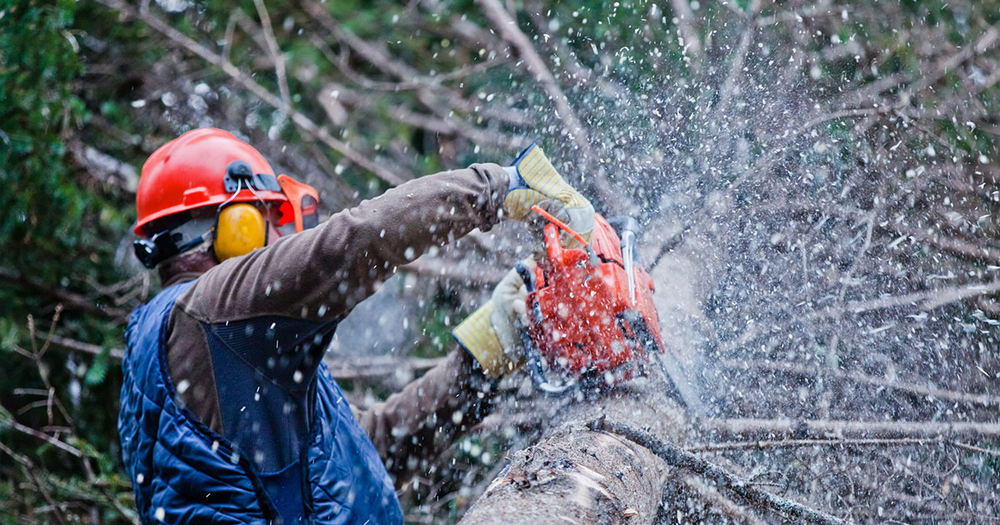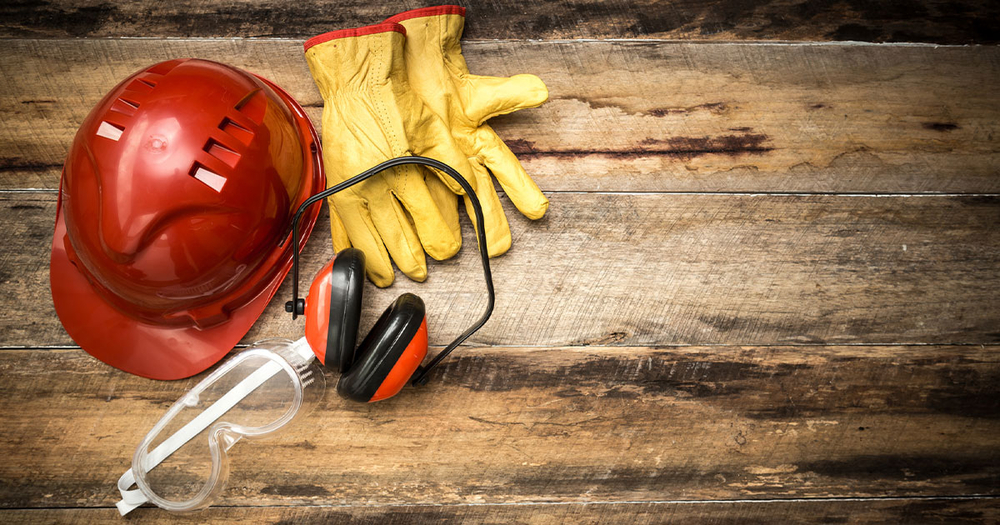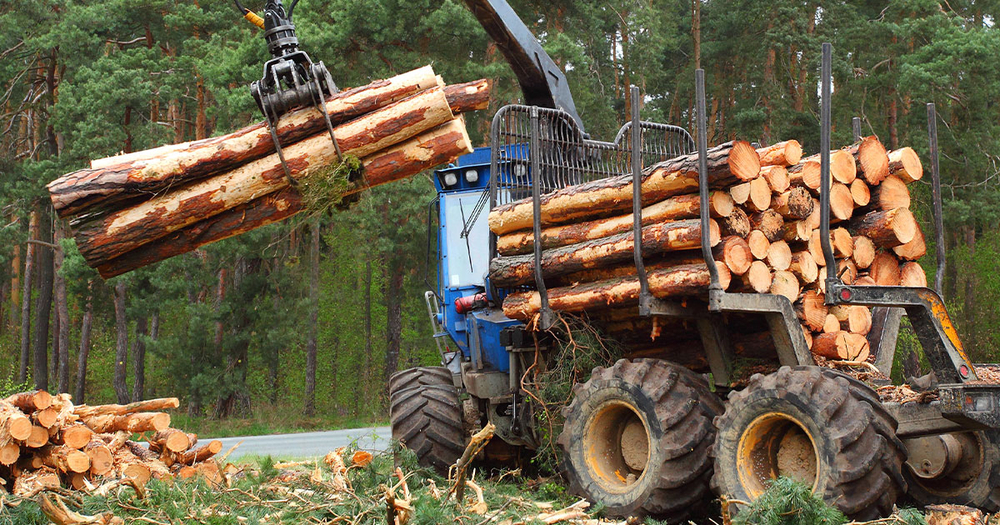
According to OSHA, “logging is the most dangerous occupation in the United States.” Research indicates that between 2010 and 2020, there were 314 logging deaths, making the fatality rate more than 30 times higher than for all U.S. workers. Thousands more were injured in serious accidents but did not die.
Employers have a legal and moral obligation to take the necessary precautions to prevent their forest workers from suffering fatal incidents. By taking initiative on the right equipment, clothing, and safety precautions, forestry agencies can make logging operations much safer for their employees.
Loggers (including fellers, limbers, buckers, and choke setters), truck drivers, general laborers, and material machine operators are at the greatest risk of injury. This is due to the massive weights, and irresistible momentum of logs and their machinery. The conditions only become more hazardous in the event of inclement weather and uneven terrain.
The most common injury threatening occupational safety is falling trees. Not only are falling trees hazards in themselves, but they also can also fall on other trees or objects on land, creating even more hazardous objects. For this reason, the danger zone surrounding falling trees is quite large.
Another common type of injury is getting crushed between two objects. This could be a piece of logging equipment, tree limb, rock, or other large objects.
Finally, workers in the forestry industry often use dangerous machinery, like chainsaws. If this machinery is not functioning properly or workers are not given sufficient training, accidents can occur.
The following tips can help organizations preserve the health and safety of their employees, and reduce fatalities.
Wearing proper attire is not enough to keep workers safe on its own. However, adequate personal protective equipment can be the difference between good health and serious injuries. Furthermore, OSHA requires that loggers wear proper gear to protect their head, hearing, eye/face, legs, feet, and hands.

Gloves protect your hands and can enhance your grip when rain or sweat creates slippery surfaces. In addition, the ideal gloves will be tight enough to prevent water from getting inside. Consider a wide selection of safety gloves to find the type that best matches your needs.
Most models are cut-resistant with grip enhancement, and some even feature external bracing to further protect the hand from impacts, accidental crushing, or cutting.
Saw pants provide the best protection for your legs for those who will be using a chainsaw. The Elvex Chainsaw ProChaps 90 Series feature full front zippers, serged seams, and attached hoods. These pants, which meet ATSM Standard for Leg Protection for Chain Saw Users, have been proven capable of stopping a chain saw running at 2,750 feet per minute.
Investing in hearing protection equipment is important for those working around loud machinery. However, it is important to find hearing protection that is enough to reduce long-term hearing damage without compromising workers’ ability to hear. Hearing protection equipment that is too strong may put workers at risk of missing crucial sounds, either from colleagues speaking to them or of branches falling.
It is necessary that everybody on site wears a hard hat in case heavy objects fall and make contact with somebody’s head. See this wide range of head protection to find a product that meets your needs. All products are OSHA-approved. Models range from full-brim to cap style, with separate liners, sweatbands, and hearing protection. For colder weather, under-cap fleece liners ensure safety and comfort in the most challenging of work environments.
Finally, wearing steel-toed shoes is crucial for protecting the feet against falling objects or other sharp obstacles that workers may encounter.
It is important that the high-level machinery being used in logging is sufficiently maintained. When tools are not functioning properly, they must be repaired or replaced before being used again.

It is also important that transportation equipment is in good shape. Trucks used for transporting timber should be in good condition when loading or transporting logs as to prevent accidents. Furthermore, trucks should feature proper lighting to ensure that workers can see the vehicle clearly. Vehicle emergency lights include LED warning lights, strobe beacons, and amber light bars.
Acquiring vehicle accessories can make your vehicle more organized. This helps to efficiently load and unload materials. These include truckbed organizers, survey treys, and truck slides.
A comprehensive safety plan ensures that all workers are on the same page about the best way to ensure safety on site.
The first key element of a safety plan is general safety standards. This includes tool handling and the use of flammable materials. For tool handling, workers should receive training on how to use tools, and what precautions are necessary for those tools. The flammable materials training should include how to store, handle, and use flammable materials such as diesel fuel and hydraulic fluid.
Furthermore, a safety plan should include a landing safety plan that dictates protocol for new people entering the worksite. There should be a designated area for truck drivers to enter and other visitors to report. It is also best for there to be a practice of questioning visitors whether they belong on-site and enforcing upon visitors regulations for wearing personal protective equipment.
It is also important for workers to know how they will communicate. Whether it be hand signals, radios, or code words, this is best established before the work begins. See this wide range of radio equipment that can improve job performance and worker safety.
Finally, a safety plan should include designated work areas. Before beginning, workers should evaluate the tall, heavy objects that are in the area. A “competent person” (per OSHA definitions), should be in charge of making this assessment and restricting the work area to zones that are not at risk of falling trees. It is best practice to station at least two tree lengths away from the cutting zone, and not to station downhill from a possible rolling tree.
Safety training is a critical aspect of any safety plan. OSHA requires that loggers hold a safety meeting at least once a month. Organizations are required to have employees sign in with the date, their signature, and the subject matter of the training.
This is most effective when it is an ongoing process that is implemented in daily operations. Simply showing a video and delivering the message in a meeting is ineffective if organizations do not establish these norms in daily practice.
Furthermore, it is not only employees that should be trained. Visitors and logging contractors must follow the same rules and procedures as employees to ensure they do not jeopardize their own safety, or the safety of other employees.
The forestry industry has proven to pose high risks for those that are working the job. In order to maintain their safety, organizations should be monitoring to ensure worker participation OSHA regulations and recommended practices. If given the proper training, safety resources, and guidance, logging operations can reduce the risk and maximize logging safety.